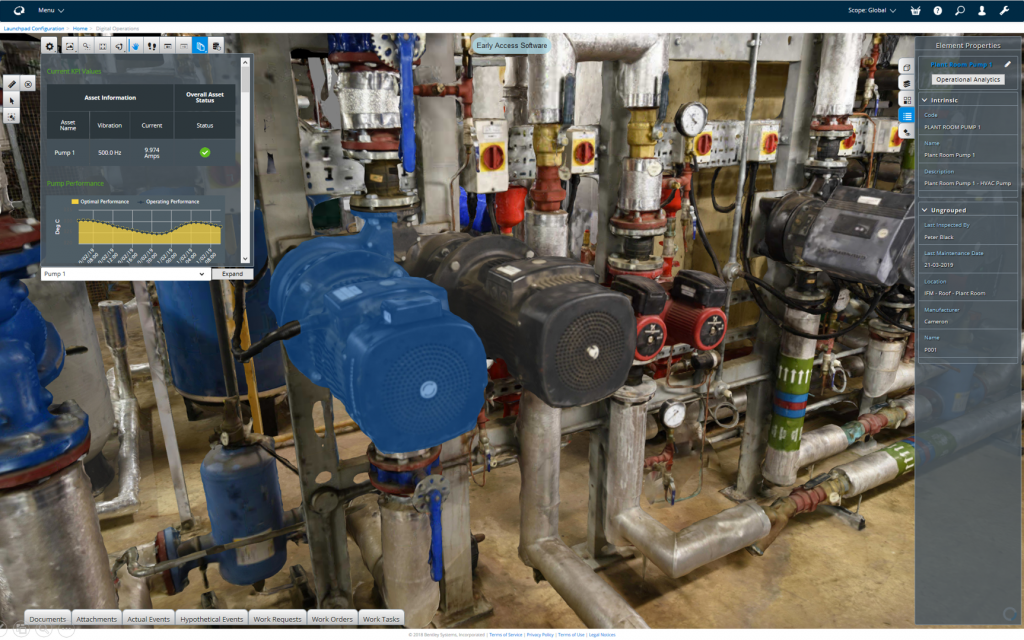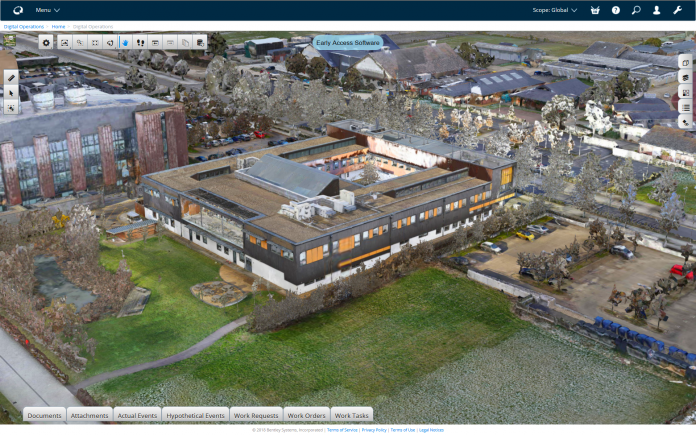The Institute for Manufacturing’s West Cambridge project is highlighting how digital twins can harness data from multiple sources to inform better building management, while improving productivity and wellbeing
Location: Institute for Manufacturing, University of Cambridge West Cambridge campus.
Project team: IfM, Centre for Digital Built Britain, Bentley Systems, Redbite, Topcon, GeoSLAM.
Completion: Ongoing
In 2017, the National Infrastructure Commission published a report, Data for the Public Good, which recognised the importance of data to the UK economy, stating: “High quality, standardised data on all our infrastructure assets, along with the ability to share this securely, will enable the UK’s infrastructure to be viewed as an independent, dynamic system”.
The NIC estimates that greater data sharing could release an additional £7bn per year of benefits across the infrastructure sector.
One of the report’s key recommendations for the government was the development of a National Digital Twin.
A digital twin is a digital representation of a physical asset that can harness data to provide information about its current design, state, condition and history, as well as the ability to share this data to better inform decision-making about how to both manage current infrastructure and what to build in the future.
In January this year, the Centre for Digital Built Britain (CDBB), via its Digital Framework Task Group, published the Gemini Principles to guide the National Digital Twin and shape the information management framework that will enable it.
The CDBB is currently in the process of establishing a Digital Twin Hub, which will create a collaborative, learning community for those who own or are developing digital twins. It will provide a network for those seeking partners, a register of active digital twin projects and will identify the gaps that need to be addressed in moving towards a National Digital Twin.
The National Digital Twin itself is not intended as a single, monolithic twin of the entire country’s infrastructure. Rather, it will be a federation of many twins, representing assets and systems at different levels of granularity, brought together to generate greater value.
To support this national ambition, the Centre for Digital Built Britain provided support for a digital twin pilot demonstrator project.

West Cambridge twin
The aim of the project, which is being led by Dr Ajith Parlikad, is to develop a dynamic digital twin of the Institute for Manufacturing (IfM) at the University of Cambridge, along with the wider West Cambridge campus, to demonstrate its impact on facilities management, productivity and wellbeing.
Its goals are to:
- Demonstrate the impact of digital modelling and analysis of infrastructure performance and use on organisational productivity.
- Provide the foundation for integrating city-scale data to optimise services such as power, waste management and transport, and understand the impact on wider social and economic outcomes.
- Establish a “research capability platform” for researchers to understand and address the major challenges in implementing digital technologies at scale.
- Foster a research community interested in developing novel applications to improve the management and use of infrastructure systems.
Work on the digital twin is being carried out in three interconnected work packages:
- Data development
This work package has developed a geometry model of the West Cambridge site, the BIM model of the IfM building with a medium level of detail and a context capture model of specific areas of the IfM with highly detailed information.
Work is being carried out in a joint effort between researchers at the IfM, Bentley Systems, which is providing expertise and technology for 3D BIM modelling of the building, GeoSLAM, which is providing the context capture scan, and Topcon, which is generating a low-level detailed 3D geometry and photogrammetry of the site using drone and vehicle-based scanning and cameras.
In addition, a good quality asset register has been developed, along with asset identification tags for around 200 pieces of critical equipment in the IfM in collaboration with Redbite.
Redbite has also developed APIs that can be used to integrate asset data with the 3D BIM model using Bentley’s AssetWise.
Finally, over 60 IoT sensors and devices have been deployed and tested to help monitor and control the condition and operation of the IfM’s critical assets and environment.
Data is received from 50 environmental sensors within the IfM, with granularity of one minute, in addition to the data captured by the Building Management Systems.
- Data integration
This work package aims to integrate data from various sources to enable effective analytics and drive better decisions.
Data collected through the Building Management System and the sensors have been integrated with Bentley’s AssetWise platform.
The most important goal is to ensure that the digital twin adheres to common data standards and is interoperable. This will involve exploring how the data from different sources can be integrated using open standards such as IFC.
- Applications
The third work package aims to develop novel applications that exploit the data captured through the digital twin.
- Applications developed so far include:
- Improving asset maintenance in the IfM (eg HVAC systems and lab equipment) through predictive data analytics.
- Improve asset tracking across the West Cambridge site.
- Generating insights for reducing energy consumption across the West Cambridge site.
- Augmented Reality support for maintenance and inspection.
Centre for Digital Built Britain
Tel: +44 (0)1223 763175
Institute for Manufacturing
Tel: +44 (0)1223 766141
Twitter: @ifmcambridge
LinkedIn: Institute for Manufacturing

















